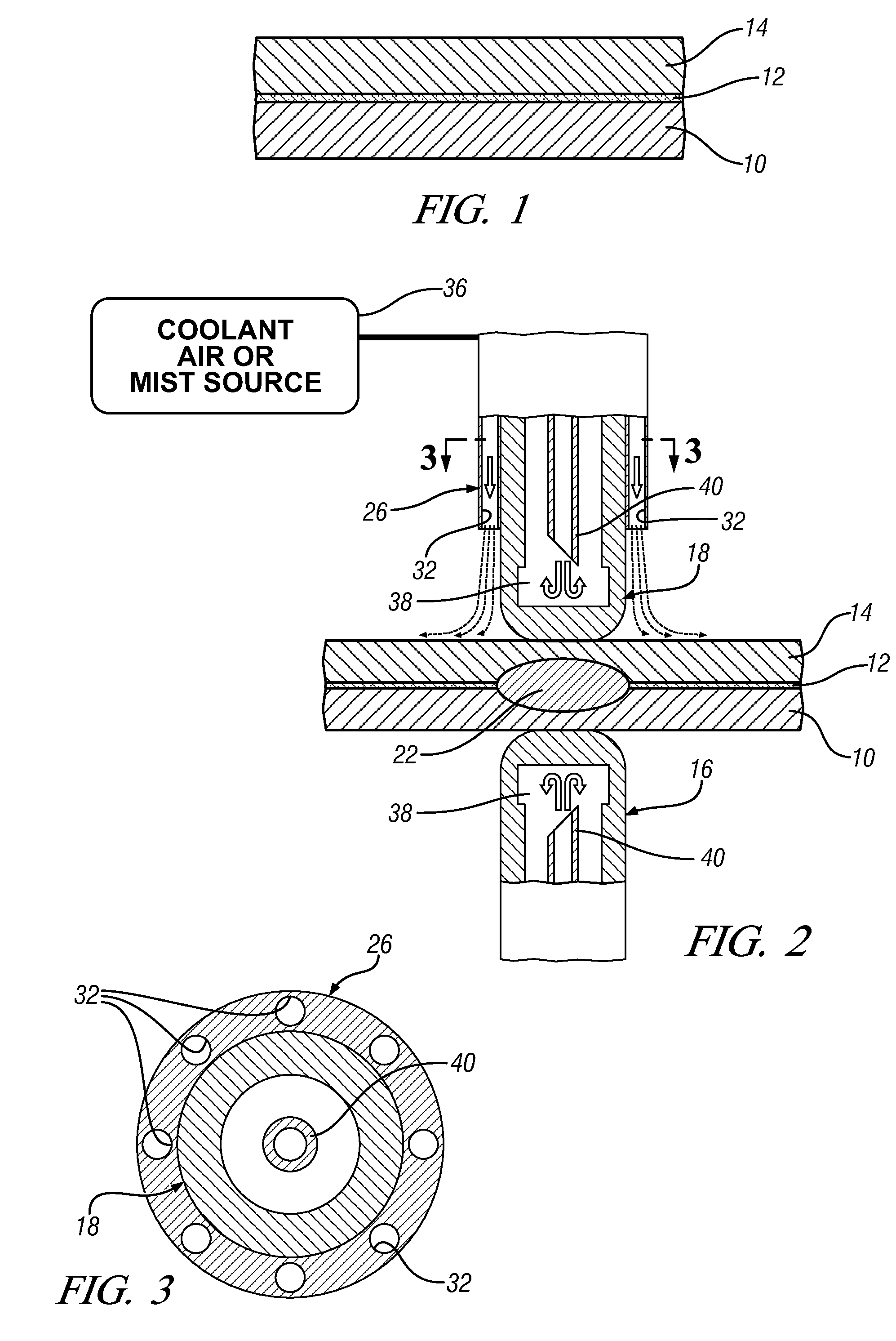Method to reduce thermal degradation of adhesive in weldbonding
a technology of thermal degradation and weldbonding, which is applied in the direction of manufacturing tools, non-electric welding apparatus, roller electrodes, etc., can solve the problems of increasing the cost and complexity of weldbonding applications, and the large area of adhesive bond degradation, so as to reduce the quality of the adhesive bond
- Summary
- Abstract
- Description
- Claims
- Application Information
AI Technical Summary
Benefits of technology
Problems solved by technology
Method used
Image
Examples
Embodiment Construction
[0011]The following description of certain exemplary embodiments is merely exemplary in nature and is not intended to limit the invention, its application, or uses.
[0012]Referring to FIG. 1, a first metal sheet 10 is coated with a heat adhesive 12 and then a second metal sheet 14 is placed atop the adhesive 12.
[0013]In FIG. 2, a weld-making tool Includes a first or lower electric resistance spot welding electrode 16 and a second or upper electric resistance spot welding electrode 18. The first spot welding electrode 16 is applied to the first sheet 10 and the second spot welding electrode 18 is applied to the second sheet 14.
[0014]Squeeze pressure is applied to the electrodes 16 and 18 and weld current is applied between the first electrode 16 and the second electrode 18 to create a resistance spot weld nugget 22 between the metal of the first sheet 10 and the second sheet 14. The heat created in making the resistance spot weld nugget 22 heats the metal sheets 10 and 14. The adhesiv...
PUM
| Property | Measurement | Unit |
|---|---|---|
| Angle | aaaaa | aaaaa |
| Temperature | aaaaa | aaaaa |
| Electrical resistance | aaaaa | aaaaa |
Abstract
Description
Claims
Application Information
 Login to View More
Login to View More - R&D
- Intellectual Property
- Life Sciences
- Materials
- Tech Scout
- Unparalleled Data Quality
- Higher Quality Content
- 60% Fewer Hallucinations
Browse by: Latest US Patents, China's latest patents, Technical Efficacy Thesaurus, Application Domain, Technology Topic, Popular Technical Reports.
© 2025 PatSnap. All rights reserved.Legal|Privacy policy|Modern Slavery Act Transparency Statement|Sitemap|About US| Contact US: help@patsnap.com



